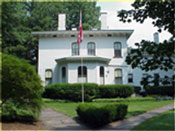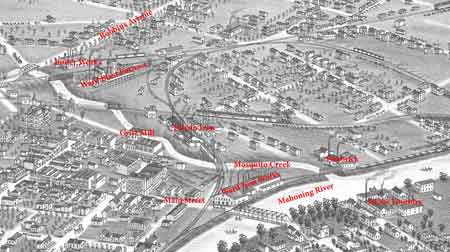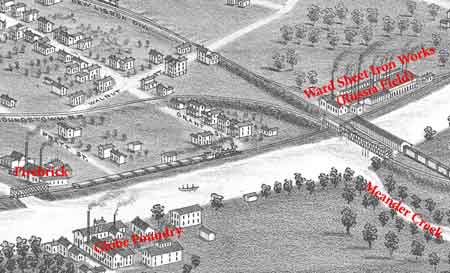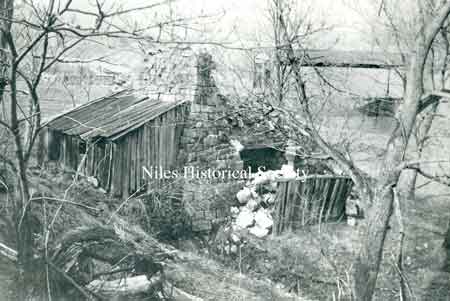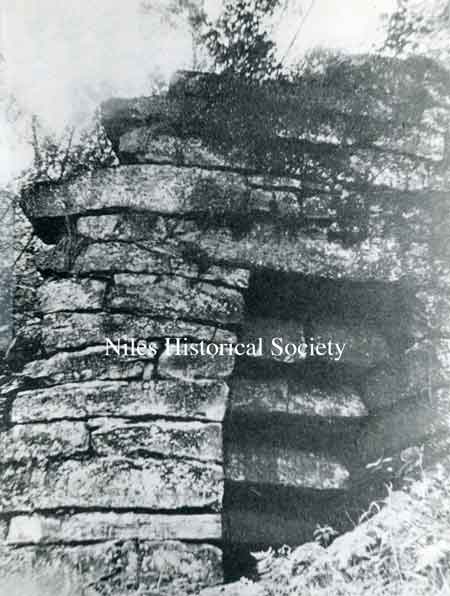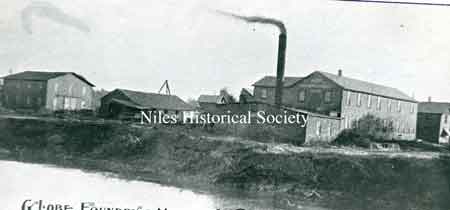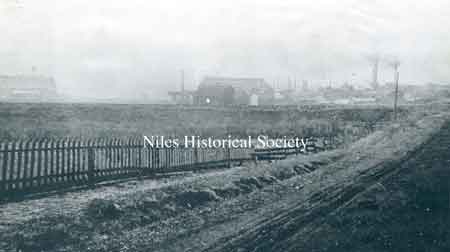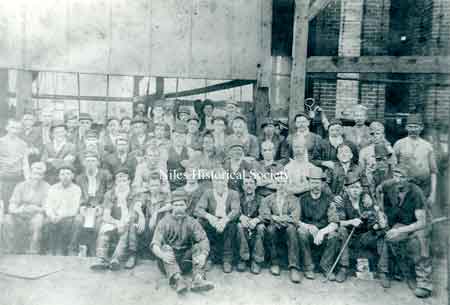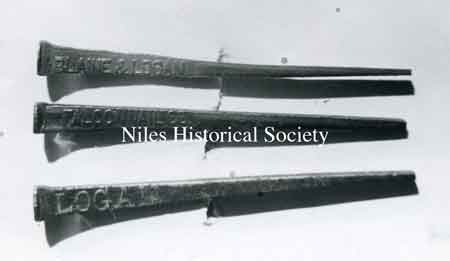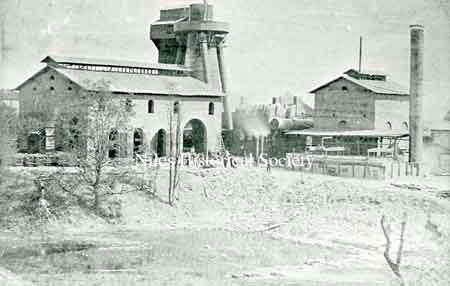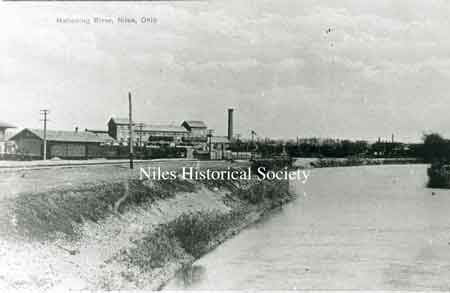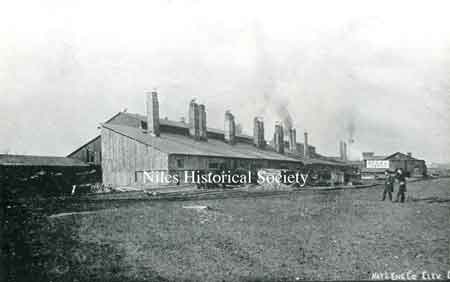Ward-Thomas Museum


The Milltown: the Early Years 1843 - 1873
Ward — Thomas
Museum
Home of the Niles Historical Society
503 Brown Street Niles, Ohio 44446
Click here to become a Niles Historical Society Member or to renew your membership
Click on any photograph to view a larger image, click on image again to zoom into photograph.
|
Site Map 1: Boiler Works,Falcon Iron, Firebrick, Globe Foundry, Gristmill, Ward Iron Works, Ward Blast Furnace, Mosquito Creek, Mahoning River. Site Map 2: Firebrick, Globe Foundry, Ward Sheet Iron Works (Russia Field), Meander Creek, Mahoning River. The first iron furnace west of the Allegheny Mountains. It was built in 1807 by Gideon Hughes and operated by William McKinley Sr. father of President William McKinley. PO 7.93
|
The Milltown: the Early Years 1843 - 1873 The industrial history of Niles
entered a new phase with the death of Warren Heaton in
1842. The pioneer work done by James Heaton and his son.
Warren, came to an end, and was followed by a period
of rapid industrial growth. These enterprises lifted the Wards to preeminence, but other industrialists, mostly Niles men, also contributed to the city’s increasing industrialization. Thomas Carter established the Globe Foundry, on the south side of the river, in 1858. Harris, Blackford and Company built a puddling and rolling mill north of the Erie Railroad, near the Heaton Dam. George and Jerimiah Reeves constructed the Niles Boiler Works on the east bank of the creek, near the Erie tracks. One of the most enduring industries started at this time was the Niles Firebrick Company, established by John R. Thomas in 1872. It stood at the confluence of the Mosquito Creek and Mahoning River. On the eve of the Great Panic of 1873, Niles was a hive of industry with two blast furnaces, four extensive rolling mills with puddling furnaces, the large nail works, the Globe Foundry, a boiler works and a brickyard. Part 2: Milltown,
Panic and Recovery 1874-1900 |
|
| |
||
|
James Heaton's “Maria” blast furnace built in 1812 on the west bank of the Mosquito Creek. Its fires went out in 1854. Very primitive but none-the-less functional. Fuel was charcoal. “Kidney” ore was melted producing 2-3 tons of pig iron per day. Molten iron was ladled out with long handled dippers into moulds or sows to make pig iron. PO 1.553 |
Photo of the Globe Foundry & Machine Works in Niles, Ohio. Founded in 1858, it operated until after WWI. PO 1.545 Smoky industrial skyline of Niles at the peak of iron manufacturing, descibed by historian Howe in 1888 as “among the most extensive in the state.” This photo is captioned Falcon Iron & Nail Co.'s Mills. Galvanizing works and Coleman Shields Co. Mills, Niles, Ohio. PO1.519 |
The crew of the Falcon Iron & Nail Co. PO1.522 Photo of nails manufactured at the Falcon Nail Co. Also Blaine & Logan imprimatur. PO 1.518 All structures were part of Ward Enterprises, by 1900 they had all been demolished. |
| |
||
|
Built in 1870 by William Ward and known as the Wm. Ward & Co blast Furnace, it failed in the Panic of 1873. It was purchased by John R. Thomas in 1879 who increased capacity from 25 to 320 tons. In 1900 it became part of the Carnegie Steel Co. but was operated only in times of great demand for steel, the last period of steady use being WWI. Closed in 1920, dismantled in 1925. This picture shows the original Ward Blast Furnace. PO1.634 |
The Niles Firebrick Co. was constructed by John R. Thomas in 1872 and was one of Niles' most enduring industries. It was known nationwide for its high quality firebrick. The new type of blast furnaces introduced after WWII made firebrick obsolete and the plant closed and was dismantled in 1974-75. PO1.562 |
In 1867, James Ward II sent a represenative to Russia to report on the possibility of manu-facturing “Russia Iron”, a high grade product much in demand for stove manufacturing. Upon a favorable report, the “Russia Sheet Mill” was built on the north bank of the Mahoning River, east of the Lisbon branch of Erie RR. PO1.621 |
| |
||
|
|
||
